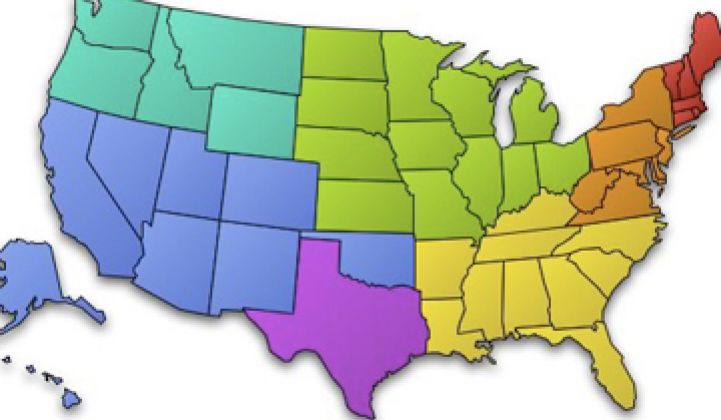Former U.S. Speaker of the House Tip O'Neill coined the phrase "All politics is local." That would seem to apply to solar politics, as well.
The U.S federal government is helping out with the Loan Guarantee Program, the Tax Grant Program, and the SunShot Initiative. And that's priming the solar industry with money and creating a climate in which investors can make an assured return. By all means, the feds should extend the 1603 grant program deadline. And a long-term energy policy would be nice, while we're at it. Perhaps a national Renewable Portfolio Standard or a more encompassing Clean Energy Standard that could include clean coal and perhaps nuclear. While we're dreaming -- how about a federal feed-in tariff?
But absent any constructive policy activity from Washington, D.C., the real work is being done at the state policy level. Here are some examples of what states are doing to increase the deployment of solar and lower its costs.
We've actively covering the vexing issue of solar permitting and solar's "soft costs" in recent weeks. Earlier this month, Colorado Gov. Hickenlooper signed the Fair Permit Act HB-1199 into law to actually do something about it.
The Fair Permit Act prevents state and local government agencies from charging excessive permit fees and plan review fees to customers who are installing solar electric or solar thermal systems. The legislation extends existing caps on solar permit fees through 2018 and closes loopholes to further reduce costs, according to the Colorado Solar Energy Industries Association (COSEIA).
According to a recent report to the DOE from solar leasing firm SunRun, inconsistencies in permitting can cost consumers up to $2,500 on a 5-kilowatt rooftop solar system. The cost stems from the time spent by installers in getting the building, zoning, and fire department permits, waiting for inspection, dealing with changes -- and losing customers in the process. The report also adds that Germany has a 40 percent installation price advantage over the United States.
In Colorado, state permit fees more than doubled last year and local fees and processes vary widely by region. In some communities, government permit costs can exceed the labor costs to install a solar system. The Fair Permit Act helps rein in excessive government fees -- and it doesn't just apply to permit fees; it also applies to plan review fees and other fees to install a solar electric or solar thermal system.
Vermont Governor Peter Shumlin signed the Vermont Energy Act of 2011 (H.56). The law provides for net metered solar power in Vermont, as well as implementing a pioneering permitting process for small solar systems (less than 5 kilowatts) that is a model for reducing the "soft costs" of residential solar.
For those small-scale solar customers, the process entails completing a registration document and a certificate of compliance with grid connection requirements. The local utility will then have 10 days to raise any interconnection issues.
California is the number one solar state, with 259 megawatts installed in 2010. What's the number two state in solar? You'd imagine it would be a large, sunny Southwestern state but, of course, the correct answer is The Garden State, New Jersey, with more than 50 megawatts in 2009 and 137 megawatts installed in 2010. New Jersey is the sixth-largest solar market in the world, and in the U.S., second only to California in installed solar capacity, with approximately 260 megawatts. If solar capacity were to be calculated on a per-square-mile basis, New Jersey would lead the nation.
And it's not because of ample solar resources, but rather because of political will and an informed renewable energy policy. In New Jersey's case, it's an SREC program as opposed to a feed-in tariff or California Solar Initiative-type rebate.
New York had just 12 megawatts of demand in 2009 -- but The Empire State wants to change that.
New York's Solar Industry Development and Jobs Act of 2011 is sitting in Albany's lap, and the New York City Solar America City Partnership just released this interactive map of existing installations and available rooftop space. The Solar Jobs Act is an RPS with a goal of 1.5 percent solar power or 1.6 gigawatts in 2020 -- up from about 0.15 percent now.
Late last year, the California Public Utility Commission, after more than a year of consideration, unanimously approved the Renewable Auction Mechanism (RAM). It's not a classic FIT, and as such might avoid some of the pitfalls afflicting poorly administered FIT programs around the globe.
The program is intended to drive small to mid-sized renewable energy development and requires investor-owned California utilities to purchase electricity from solar and other renewable energy systems from 1.5 megawatts to 20 megawatts in size. (Here's a link to the CPUC decision.)
It would appear that policy progress will occur at the state level. For details on utility-scale solar at the state level, check out Shayle Kann's report from GTM Research.



